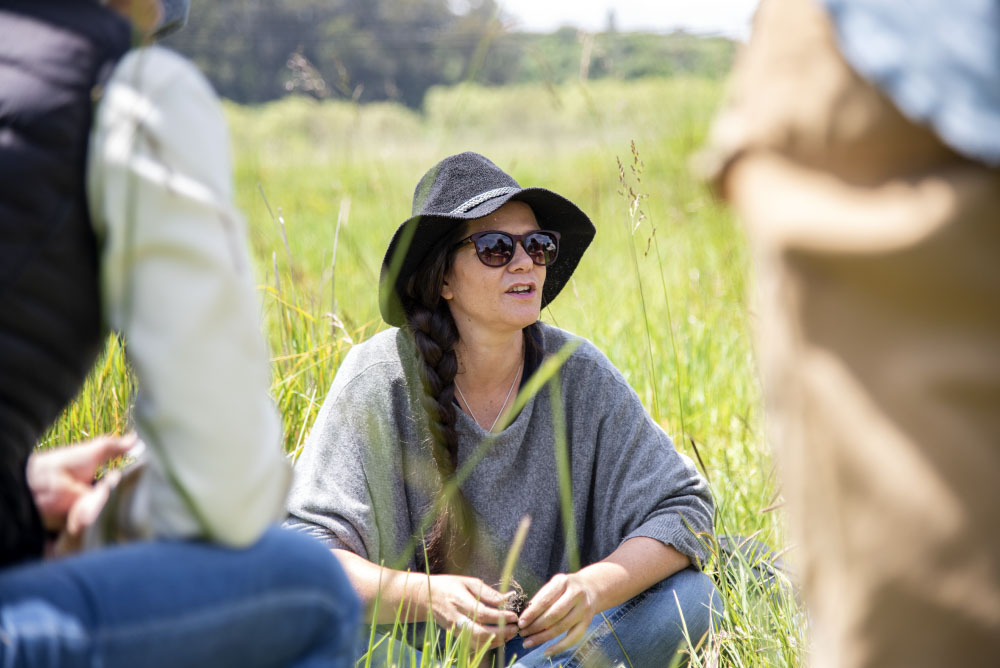A Day in the Field with Nicole Masters – A Photo Essay
Photos: Wendy Millet and William Milliot
Intro and captions: Mark Biaggi and William Milliot
Nicole Masters has been a visitor to our ranch this year. She brings a systems approach to soil health and forces our team to dig deeper into our understanding of the life above and below our feet. She helps us think about everything from the chemical compounds that make up the micronutrients that sustain the soil biota to the potential of various grasses and forbs in our pastures to be a food source for cattle, wildlife, insects, and soil microbes. This month she headed out into the fields with us to evaluate the soils in some of our trial plots. The plots are part of various five-year soil amendment, cover crop, and grazing plan trials we are conducting around the ranch. The following is a photo essay of our day with Nicole.
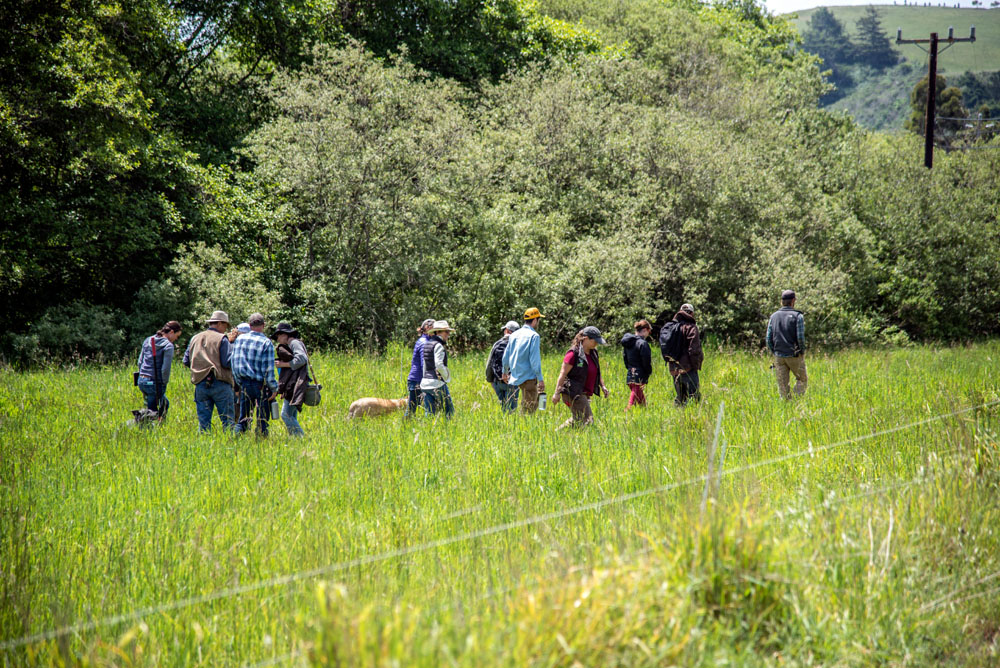
Off to the first trial area. The rain, more than twice last year’s total, was plentiful until about a month before Nicole’s arrival. In this photo, we head to a location where we applied enhancements recommended by Nicole to address biological roadblocks to the healthy functioning of water, mineral, carbon, and energy cycles in our soils. Through samples we took, we were able to look at the chemistry and mineral composition of the soil and evaluate the plant tissues of forbs, grasses, and legumes to determine what the plant is offering as a feed source as well as its relationship to what’s happening in the ground.
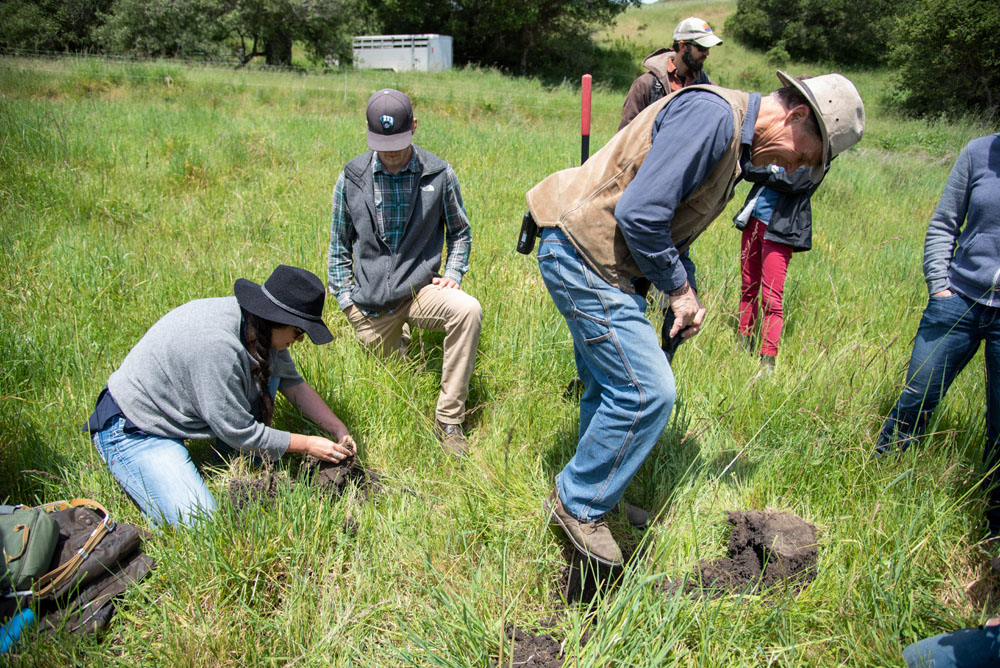
Nicole checks root structure and looks for signs of active biology and soil moisture while Mark Biaggi, Ranch Manager, digs up more samples. Initial observations suggest this plot is drier than anticipated. Was this condition because of residual conditions from previous years of drought? Or was the compaction from years of farming in the past making the soil resistant to our applied supplements? Or, was it just that the soil had not had enough time for the amendments, applied in February, to take effect?
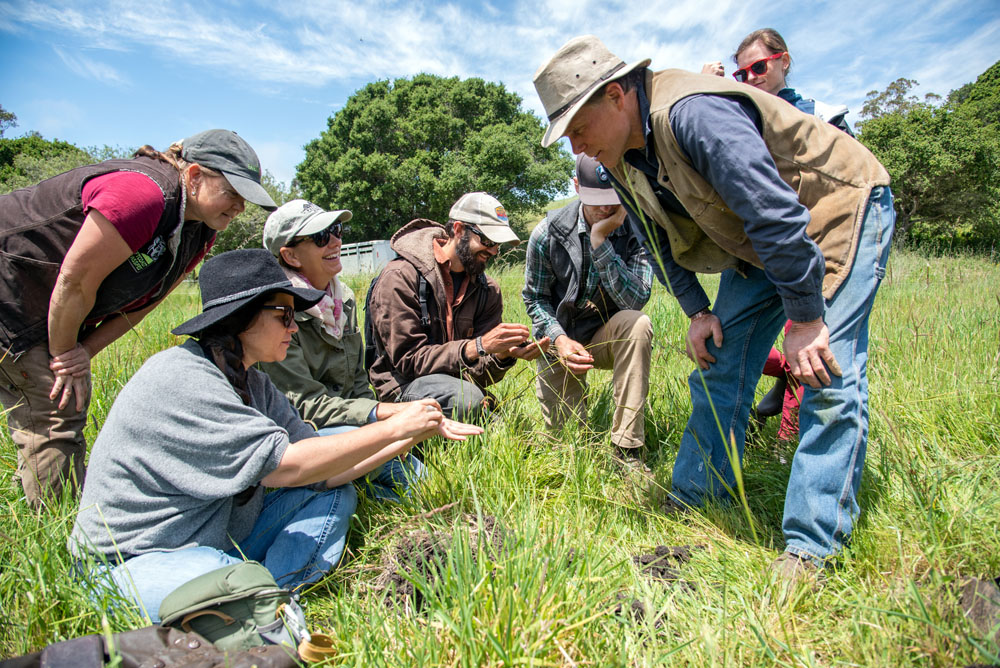
Something of interest? Nicole points to a worm in a state of hibernation. As the soil dries, the life within either dies or goes into hibernation. Part of the goal of improving water infiltration and storage is to keep that soil life active for as long as possible; doing so will improve above-ground productivity and enable the microbes and other lifeforms to reproduce and ultimately become organic soil carbon.
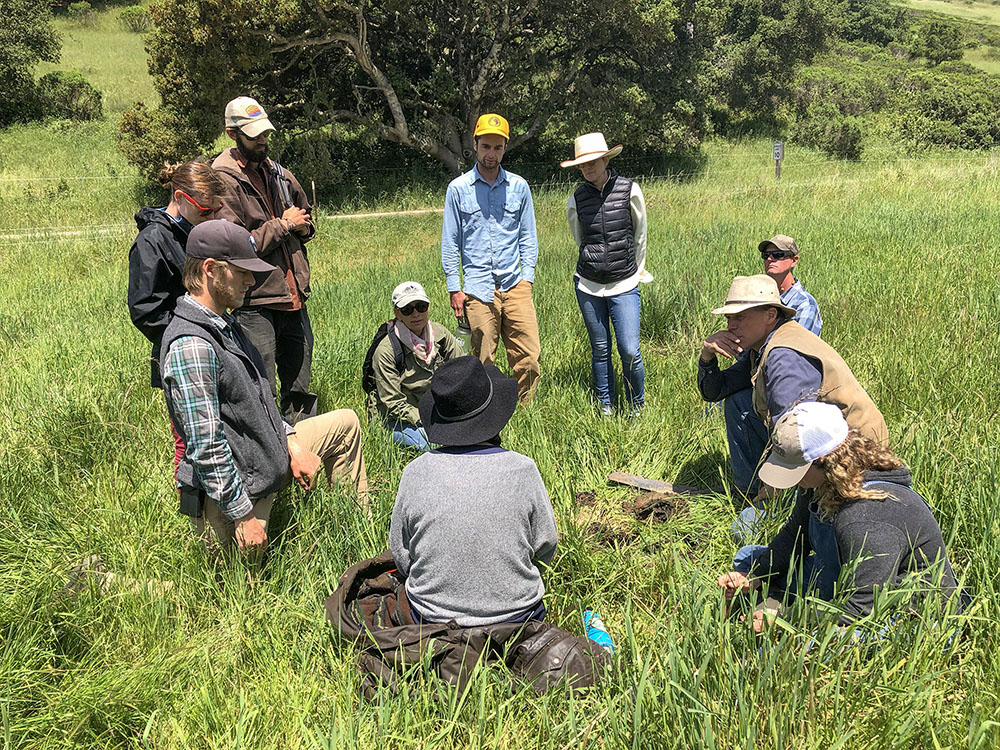
Nicole discusses what she’s seeing, what we can expect to see going forward, and possible benefits or challenges at this trial area. Part of what we hope to achieve through our trials is a better understanding of ways to improve soil productivity. We are interested to see which soil amendments will have beneficial results and which ones won’t and what else we will learn along the way about the complex relationships in the soil. Apprentice, Drake Sweazy listens on intently.
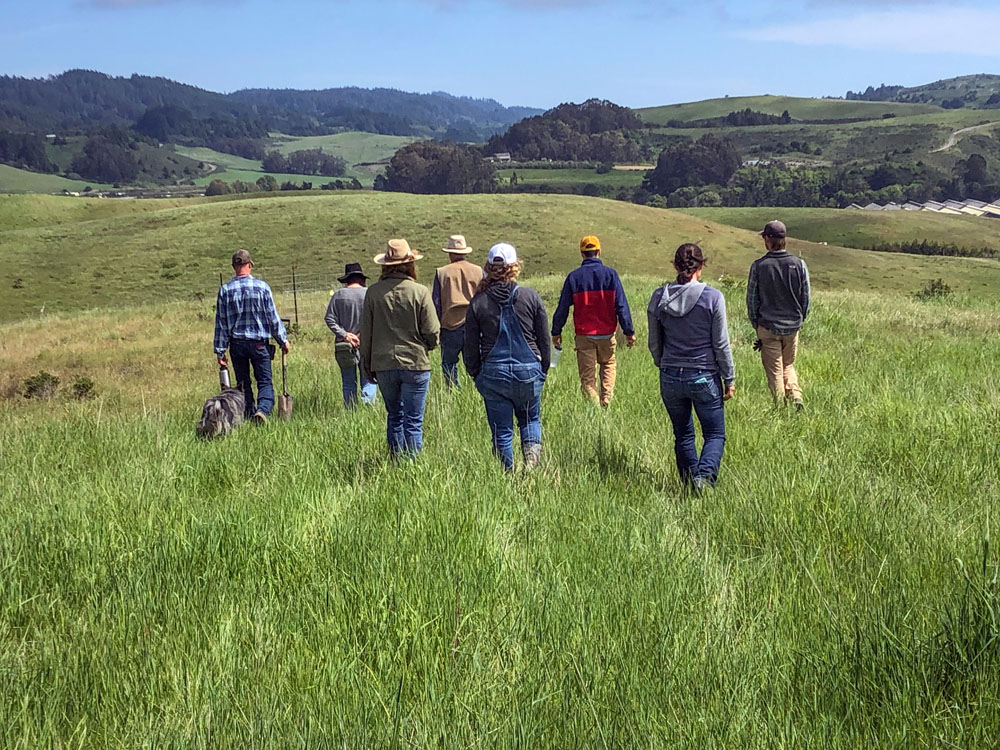
After lunch, we moved to the west side of the ranch. Different trials and different results.
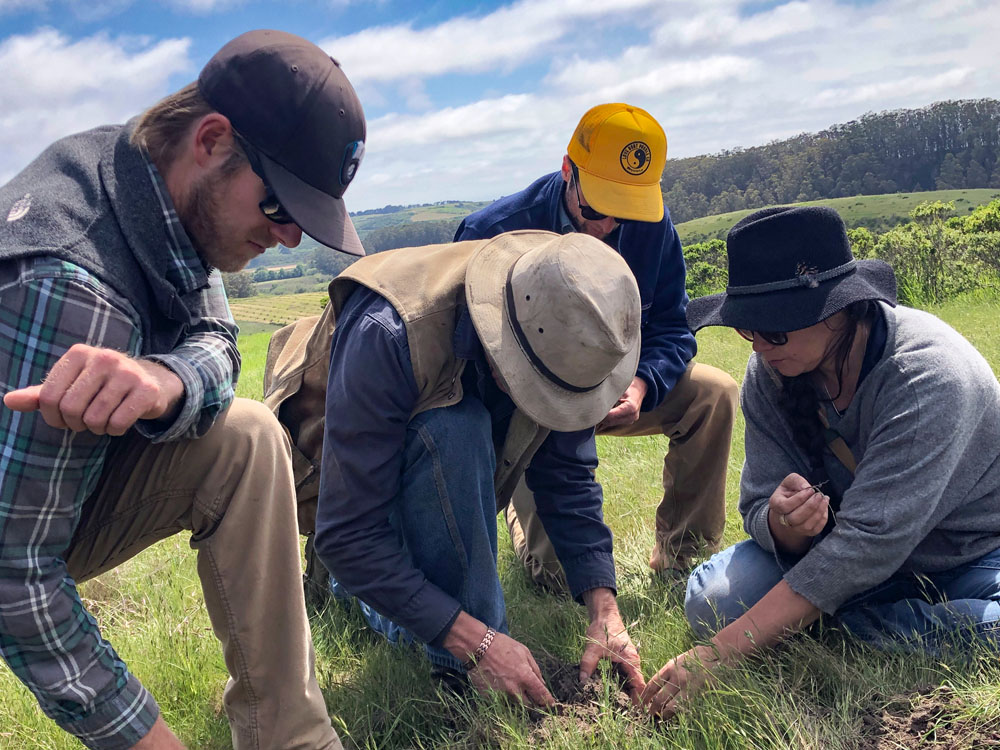
In this instance, Mark and Nicole break apart a soil clod to perform a worm count as Drake and Ford Smith, our partner in the trials, check out their own samples. Ideally, we would like to see roughly 20 to 25 worms per shovel full. Though we only counted eight this day, time will tell whether our attempts over the next 5 years to increase the worm count prove fruitful.
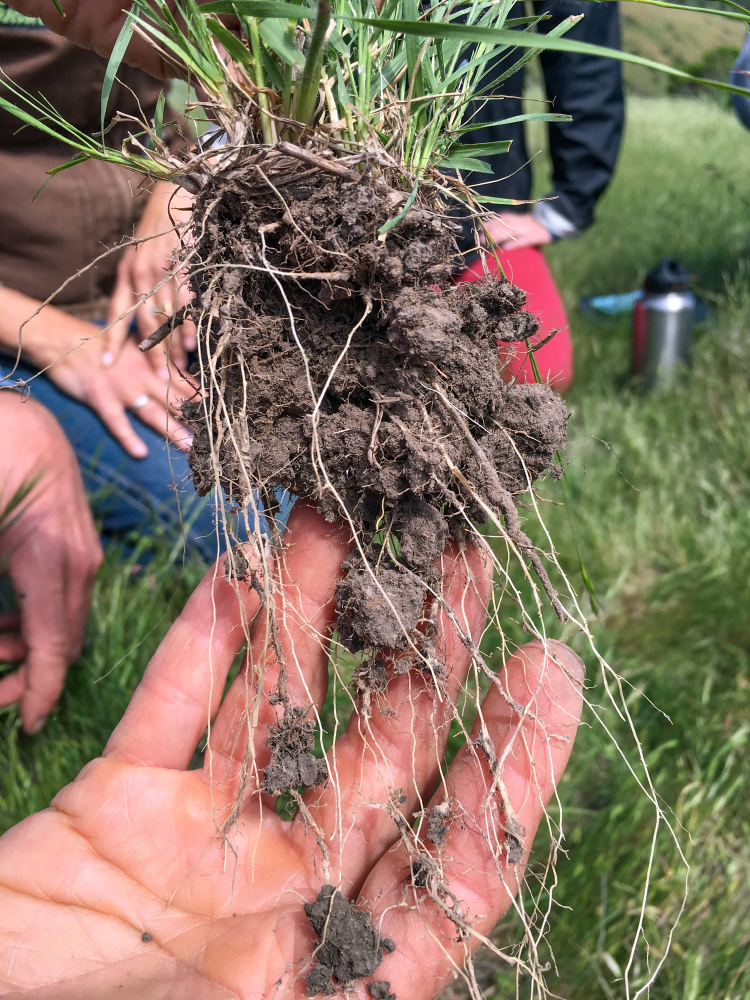
Looking at root depth and root sheathing as well as for signs of water infiltration and active biology.
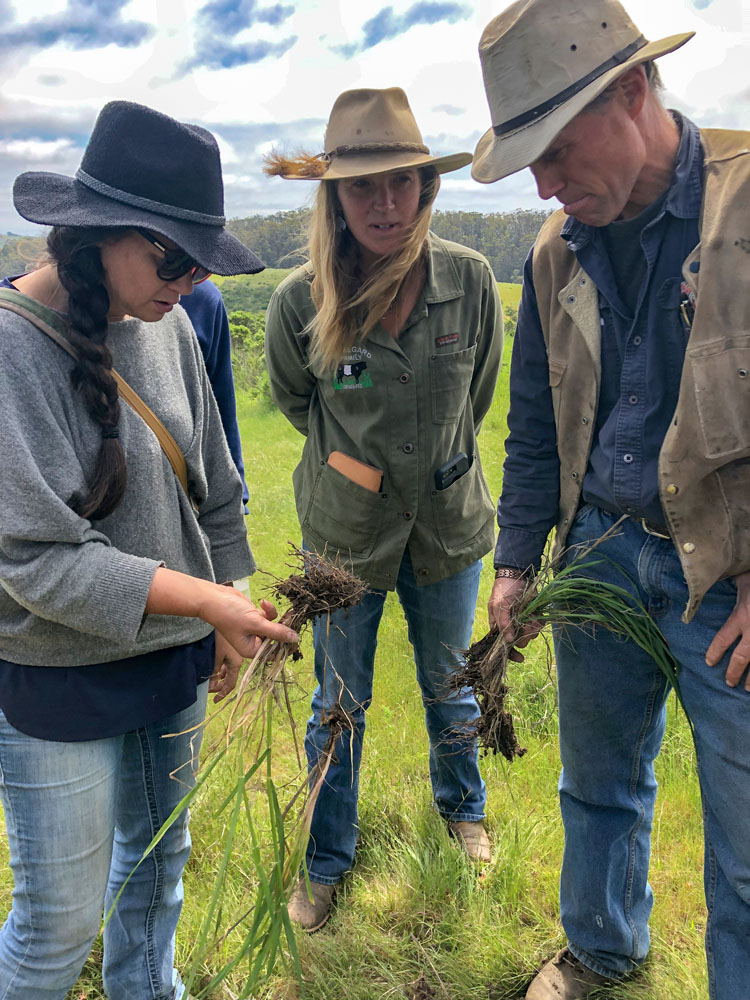
The soil in this area of the ranch is lighter, sandier and on steeper slopes. Historically it was farmed for many years which may have caused significant topsoil erosion. The priority for the trials in these steeper plots is to re-establish perennial grasses in the hopes of heading off future erosion. Here, Nicole, Mark, and our neighbor Doniga Markegard of Markegard Family Grassfed, examine the roots of a perennial grass that managed to take hold. In time, the roots of the perennial grasses will grow longer and help increase water infiltration and soil cohesion but for now, we are encouraged simply to see them taking root.
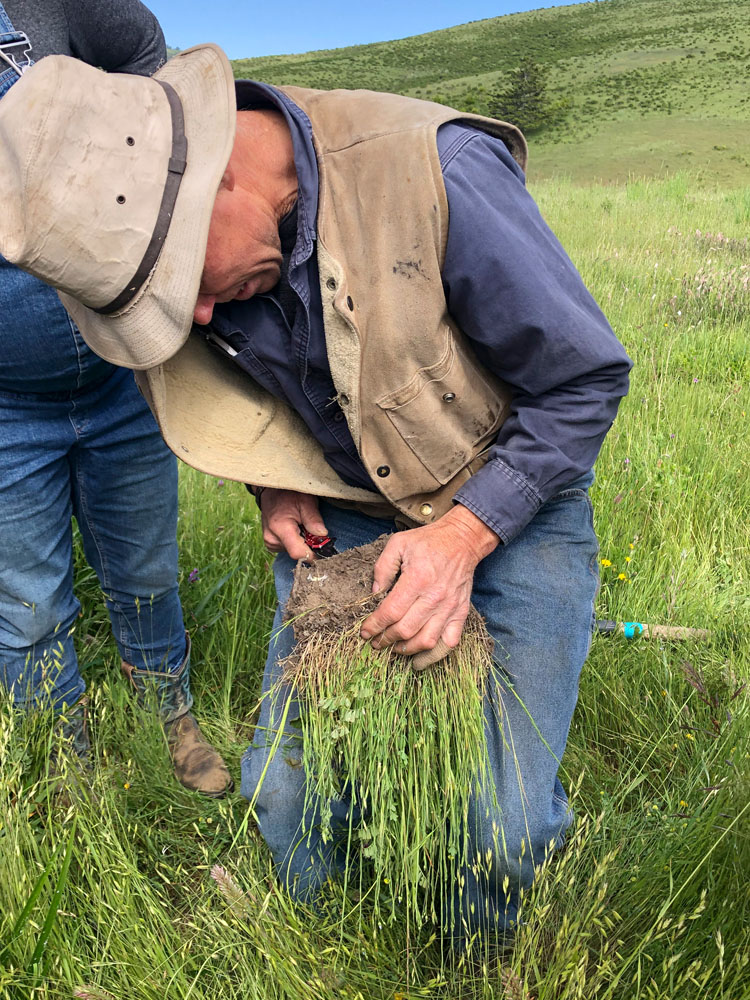
Mark Biaggi digs out a Mealybug, a persistent pest in this plot. Mealybugs inhibit root growth and therefore the ability of grasses to interact more prosperously with the soil microbiology. The presence of these bugs is often associated with low soil fertility and sandy conditions. Our goal here is to increase fertility, encourage plant diversity, and modify the soil’s mineral balance in a way that encourages Mealybug predators.
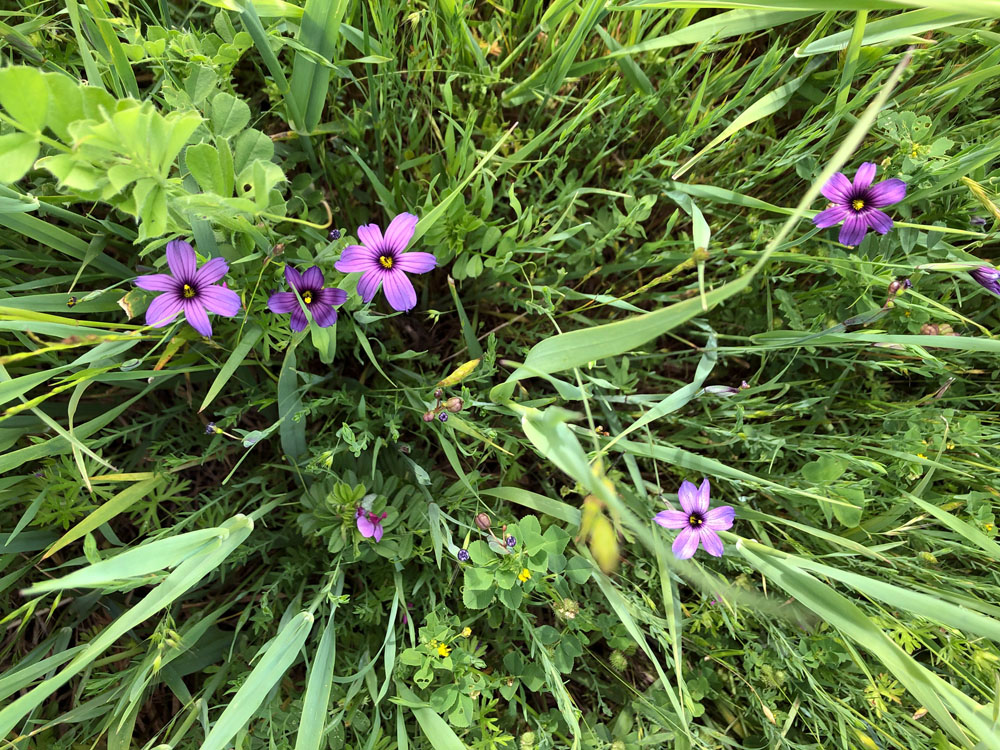
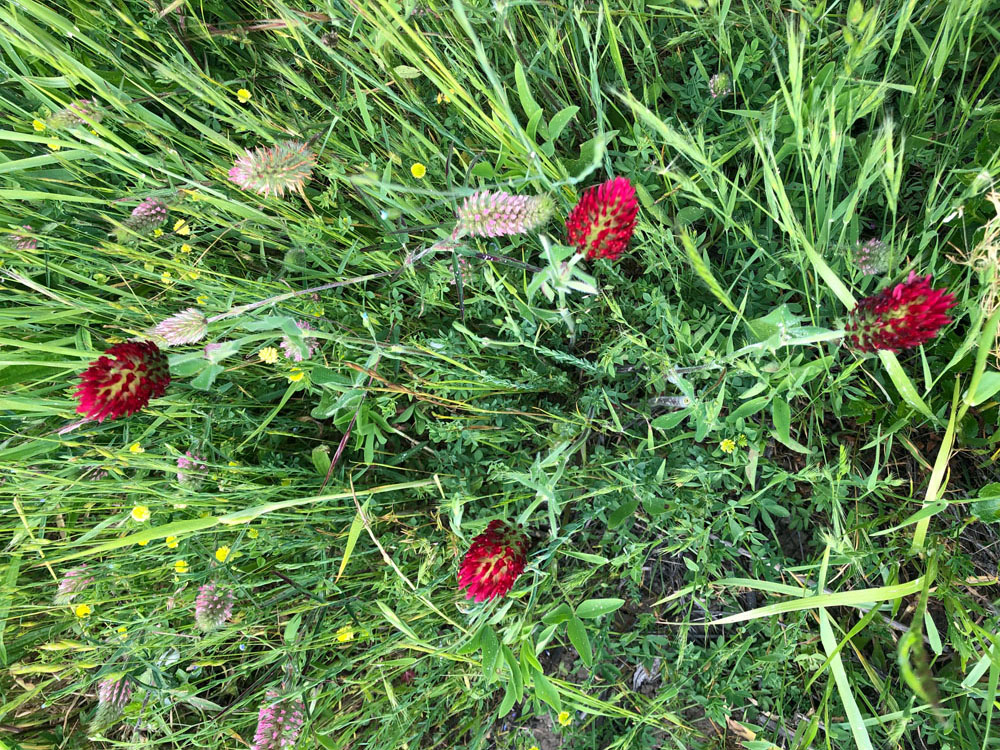
Blue-eyed grass and crimson clover are some of the grass and forb species we are seeing.
The late May rains are leading to an abundance of forage, and our dry, hot California summer is sure to follow. As the rains continue, we wait for lab results from all of the trial plots and look forward to the test results including soil chemistry (minerals), soil biology (fungi/bacteria ratios), and plant tissue samples for Relative Feed Value and the mineral content of specific species.
When fall arrives, we will sample all the plots again to see how the soil and above-ground biology is responding to the amendments we applied. We hope the trial results will offer clues on how best to manage our landscape for system-wide health, including answering questions we often ask ourselves, such as: which and how much of the soil biology will survive the long dry season, what plant communities thrive and under what conditions, are our pastures improving in both plant diversity and abundance, and are soil carbon levels changing?
We look forward to sharing what we are learning in year one of our trials. Stay tuned for our fall updates.
